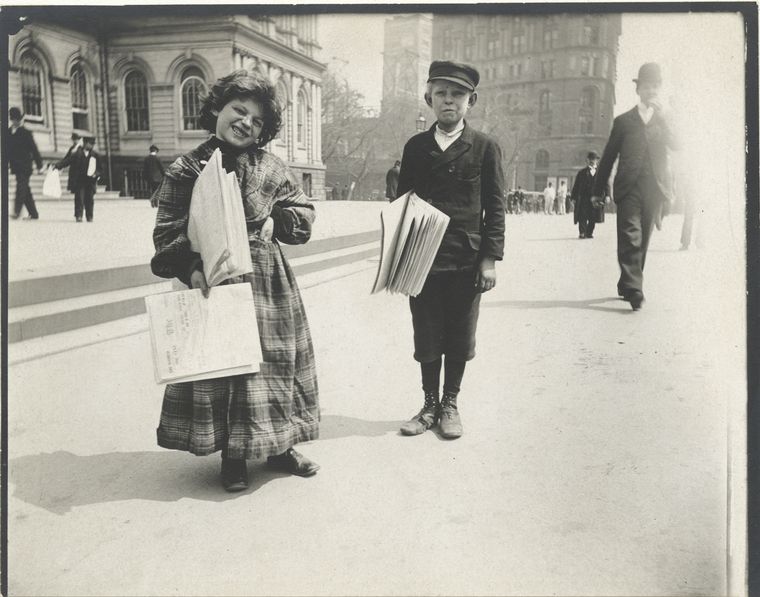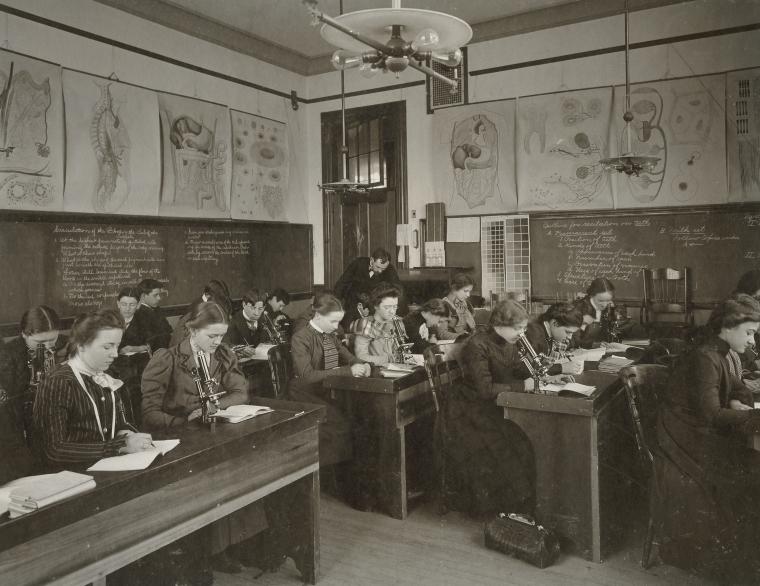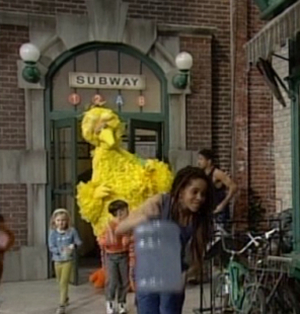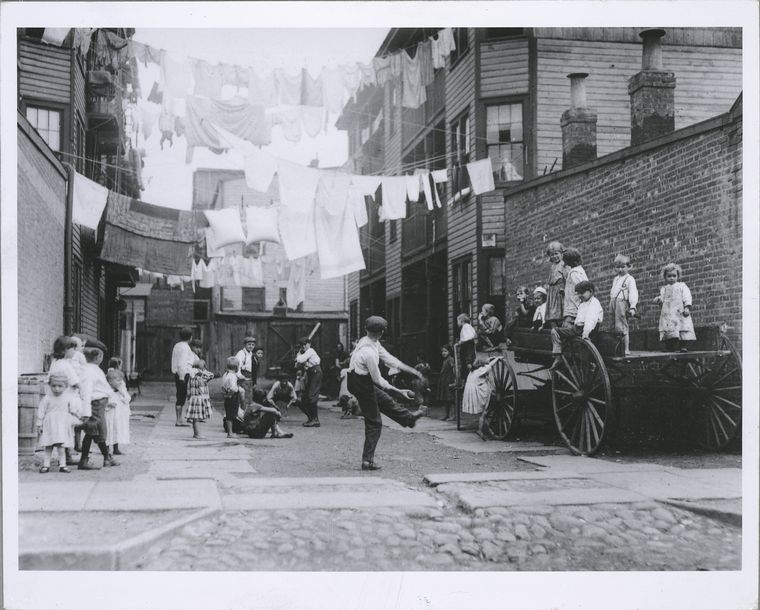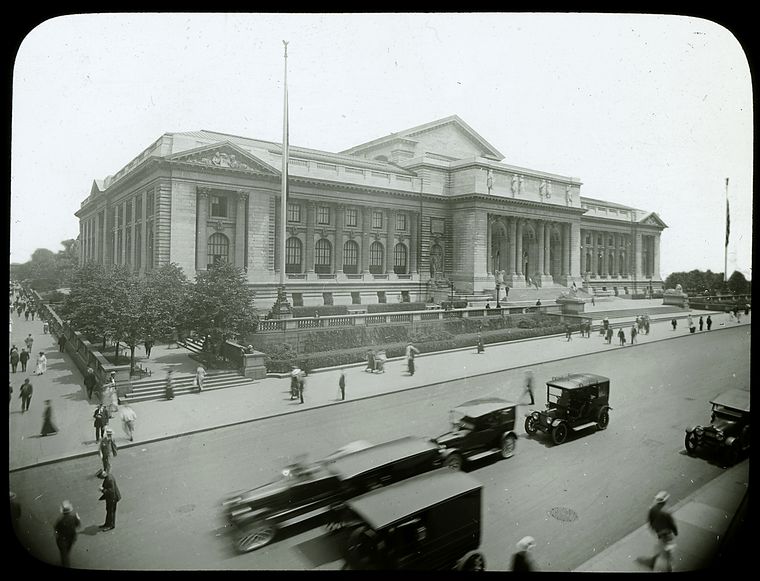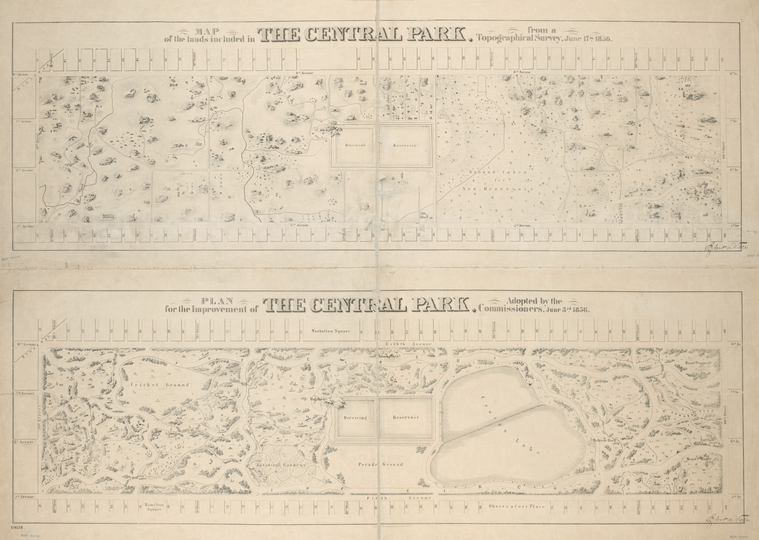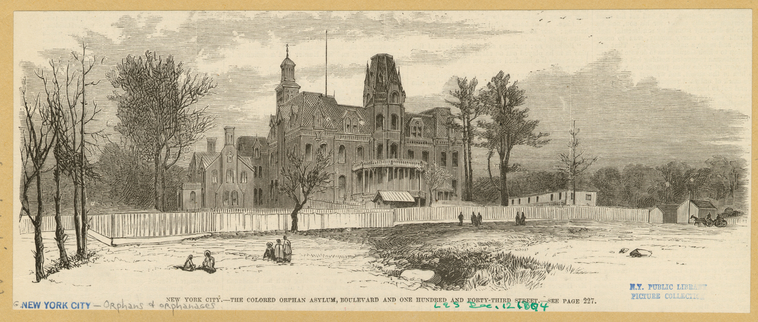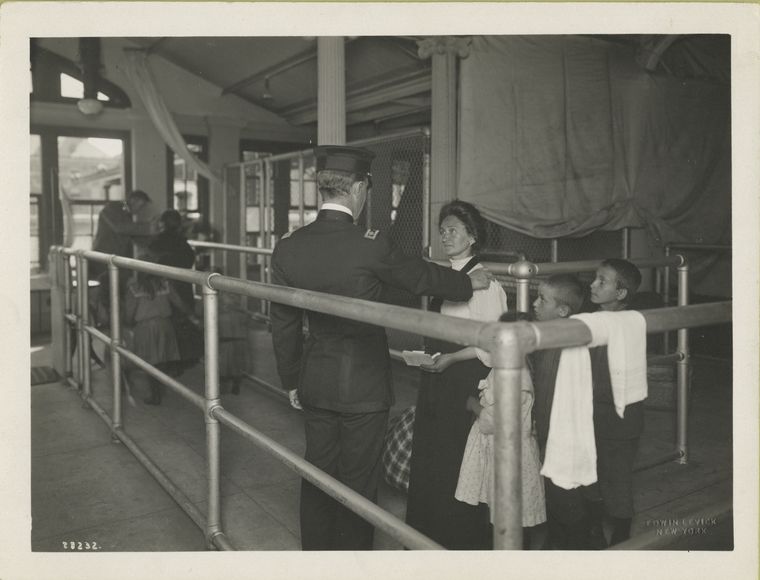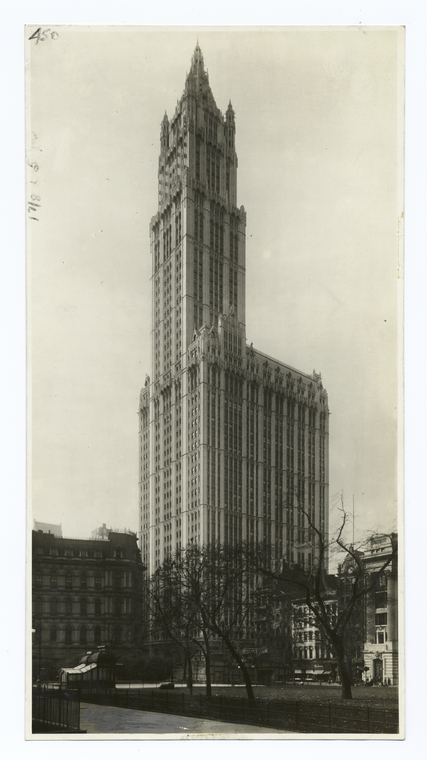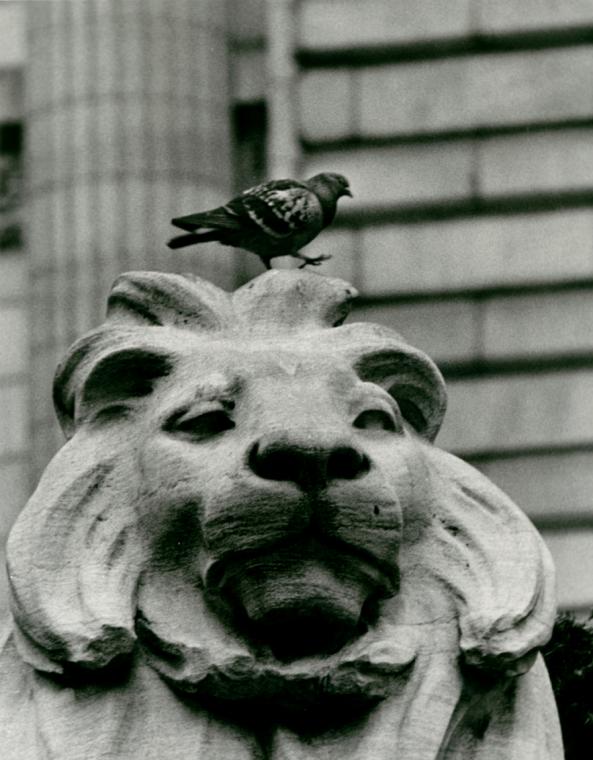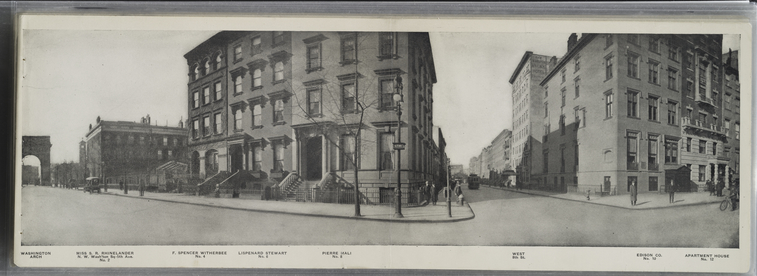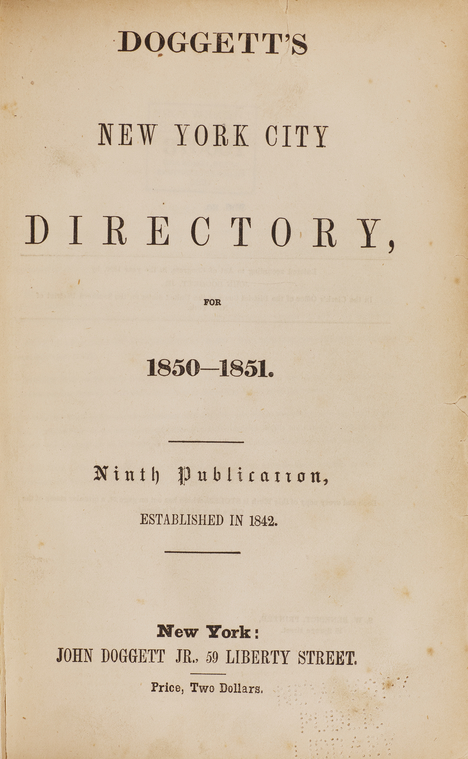Conducting Genealogical Research Using Newspapers
by Megan Margino, Milstein Division of U.S. History, Local History & Genealogy, Stephen A. Schwarzman Building
October 22, 2014
Historical newspapers are useful tools for history and genealogy research. They can be searched for ancestors’ death notices/obituaries, personal announcements and celebrations, community involvement, social news and gossip, lodge and club news, employment ads, real estate transactions, legal notices, casualty lists, military news, criminal activity, and much more.
Class Act: Researching New York City Schools with Local History Collections
by Andy McCarthy, Milstein Division of U.S. History, Local History & Genealogy, Stephen A. Schwarzman Building
October 20, 2014
The history of education in New York City is fraught with strikes, moral stewardship, ethnic discrimination, caritas, religious debate, political bias, Fame, and Welcome Back, Kotter. This guide will serve as a springboard for researching primary and secondary school history at NYPL and elsewhere.
Where in New York is Sesame Street?
by Carmen Nigro, Assistant Director, Map, Dorot Jewish, and Local History & Genealogy Divisions, Stephen A. Schwarzman Building
September 23, 2014
Can I tell you how to get to Sesame Street? Well, I can try. You can get to the Sesame Street Subway Stop by the A, B, 1, or 2 trains, which if you check any MTA map, do not intersect at any current station.
A Digitized History of The New York Public Library
by Megan Margino, Milstein Division of U.S. History, Local History & Genealogy, Stephen A. Schwarzman Building
September 19, 2014
The History of the New York Public Library, Astor, Lenox and Tilden Foundations provides a thorough account of 19th century New York City libraries, their consolidation into a unified system, and the construction of NYPL’s central library (now known as the Stephen A. Schwarzman Building).
Play Strike! Exploring NYC Playgrounds Through Historical Newspapers
by Megan Margino, Milstein Division of U.S. History, Local History & Genealogy, Stephen A. Schwarzman Building
August 26, 2014
At the turn of the 20th century, children’s lifestyles were not quite what they are today. Child labor laws were not declared constitutional until 1938 and children largely socialized with their adult co-workers in dance halls, gambling dens, and gin mills. It was this children-as-adults culture that sparked the play movement, removing children from the “physical and moral dangers of the street” to playgrounds, under the direction of trained play leaders.
How to Find Historical Photos of New York City
by Carmen Nigro, Assistant Director, Map, Dorot Jewish, and Local History & Genealogy Divisions, Stephen A. Schwarzman Building
July 30, 2014
Researchers commonly seek photographs of places in New York as they once existed in history. HistoryPin.com and WhatWasThere.Com have done admirable work in placing historic photos in their geographic context, however they represent but a fraction of available photos, and associated descriptive metadata can vary in accuracy and precision.
Peeling Off The Painted Layers of NYC Walls: Experiments With The Google Street View Archive
by Brian Foo, NYPL Labs
June 24, 2014
As a web developer who works on a screen and an illustrator that works on paper, I have always admired those who could paint big—often on impossibly large and inconveniently placed walls—only to be erased in a matter of weeks or days. The ephemeral nature of street art is what makes it simultaneously appealing and frustrating as a viewer. However, Google Maps recently rolled out a feature allowing users to go back in
Can You Help Find the Descendants of Seneca Village?
by Philip Sutton, Milstein Division of U.S. History, Local History & Genealogy, Stephen A. Schwarzman Building
May 7, 2014
Anthropologists Diana Wall, Nan Rothschild, and Cynthia Copeland of the Seneca Village Project want to hear from "anyone who has heard family stories or has other reasons to believe that he or she is a descendant of residents of Seneca Village."
Our Favorite, Most Absorbing, Compelling, and Pleasurable [True!] Tales of New York City
by Carmen Nigro, Assistant Director, Map, Dorot Jewish, and Local History & Genealogy Divisions, Stephen A. Schwarzman Building
April 28, 2014
The Milstein Division of United States History, Local History & Genealogy recommends our favorite, most readable, most memorable New York City nonfiction. These are the true stories of New York that engaged us, that intrigued us, and that we thought you might like to read as well.
The Most Significant Drum Head in Popular Music, Part 2
by Barbara Cohen-Stratyner
February 18, 2014
Upon taking physical possession of the piece, my mind was set on two objectives. The first was to prove to myself that the drum head really was what it appeared to be. And number two, proving to the collecting world in general that this was, in fact, the Sullivan show drum head.
Researching Orphans in Genealogy
by Carmen Nigro, Assistant Director, Map, Dorot Jewish, and Local History & Genealogy Divisions, Stephen A. Schwarzman Building
November 7, 2013
If you have an orphan in your family tree, you may have to go through additional steps to find relevant genealogical records for the orphaned or adopted ancestor. Orphans originating in New York City are not uncommon because of the city's history with the Orphan Train movement.
From the 1850s to the 1920s, the Orphan Train Movement was an organized effort to transport children from overcrowded cities, such as New York City, to foster homes across the country. An estimated 250,000 orphaned, abandoned, or
TeachNYPL: 'Two Wars,' African Americans, Emancipation, and the American Revolution (Gr. 6-8)
by Lakisha Odlum
October 4, 2013
“We hold these truths to be self-evident, that all men are created equal, that they are endowed by their Creator with certain unalienable Rights, that among these are Life, Liberty, and the pursuit of Happiness.”—Declaration of Independence, July 4, 1776
The American Revolution symbolizes a critical moment in the history of the United States, and the Declaration of Independence is the key symbol of that moment. With its rhetoric of freedom and equality, the Declaration of Independence inspired the colonists to courageously fight for their rights.
TeachNYPL: 'Grace Aguilar's American Journey,' A Common Core-aligned Research Experience (Gr. 11-12)
by Danielle Lewis
September 18, 2013
By 1900, New York City and the United States were undergoing waves of dramatic, traumatic change. Industrialization, Reconstruction and a surge of immigrants from across the globe were remaking every aspect of life, from transportation to education, leisure, labor, race relations and the status of women. One response to the dislocations and turmoil of this era was the reform efforts that we now classify as the “Progressive Movement.”
TeachNYPL Summer 2013: Lists for Lesson Planning - Primary Sources and the Common Core
by Amie Wright
August 27, 2013
We have just shuttered the doors on our first Education Innovation @ NYPL Summer Institute. During this three week Institute, master teachers from NYC (and further afar) met curators from our Research Divisions, explored our Archives, and connected with members of our Strategy Department—all with the intention of addressing how we can better identify materials from our collections for use in the classroom, and how we can better connect these materials to teachers. The New York Public
Why Your Family Name Was Not Changed at Ellis Island (and One That Was)
by Philip Sutton, Milstein Division of U.S. History, Local History & Genealogy, Stephen A. Schwarzman Building
July 2, 2013
There is a myth that persists in the field of genealogy, or more accurately, in family lore, that family names were changed at Ellis Island. They were not.
The Woolworth Building: The Cathedral of Commerce
by Philip Sutton, Milstein Division of U.S. History, Local History & Genealogy, Stephen A. Schwarzman Building
April 22, 2013
April 24th sees the one hundredth anniversary of the opening of the Woolworth Building, at 233 Broadway. In 1913 the Woolworth Building was the tallest inhabited building in the world, and would remain so until the opening of the Chrysler Building, in 1929. The Milstein Division's collections include a series of photographs, taken by the photographer Irving Underhill, that chart the building's construction. This post looks at those photographs, and at the man who commissioned the building's construction, Frank W. Woolworth, and its architect, Cass Gilbert.
The term
How Did the Pigeon Get to NYC?
by Carmen Nigro, Assistant Director, Map, Dorot Jewish, and Local History & Genealogy Divisions, Stephen A. Schwarzman Building
August 23, 2012
One can scarcely think of any park in NYC — or any city, really — without envisioning the ubiquitous pigeon there as well.
Fifth Avenue From Start to Finish: The 1911 Equivalent of Google Street View
by Carmen Nigro, Assistant Director, Map, Dorot Jewish, and Local History & Genealogy Divisions, Stephen A. Schwarzman Building
June 25, 2012
This image is great because you will realize that photo manipulation came long before Photoshop. This policeman is altered artistically. Also, you can spot the Berlitz school of languages, a company that is still making language learning materials today.
There are so many lovely things to see in this collection. Check out the Flatiron Building,
Direct Me NYC 1786: A History of City Directories in the United States and New York City
by Philip Sutton, Milstein Division of U.S. History, Local History & Genealogy, Stephen A. Schwarzman Building
June 8, 2012
Before the telephone directory, there was the city directory, a book that listed the names, addresses, professions, and in some cases ethnicity, of people in a particular town or city. Many of these directories have been digitized for your perusal, or are available on microfilm, all at the New York Public Library.
In New York City, city directories were printed between 1786 and 1934: the first telephone books began to appear in the late
Connections in Unlikely Places: A WWII Genealogy Story
by Phyllis Trager
May 23, 2012
Many patrons arrive at the Milstein Division of U.S. History, Local History and Genealogy with questions and something more. Often it is a letter written long ago, an address of a deceased cousin, or a sepia toned photograph from 1930. All are talismans from which patrons begin their family research.
This photo is my maternal uncle, Sgt. Phillip M. Carlon, 451st Bomber Group, U.S. Army Aircorps. Uncle Phil sits on the barrack steps at Stuart Airfield in
 With your library card, it's easier than ever to choose from more than 300,000 e-books on SimplyE, The New York Public Library's free e-reader app. Gain access to digital resources for all ages, including e-books, audiobooks, databases, and more.
With your library card, it's easier than ever to choose from more than 300,000 e-books on SimplyE, The New York Public Library's free e-reader app. Gain access to digital resources for all ages, including e-books, audiobooks, databases, and more.